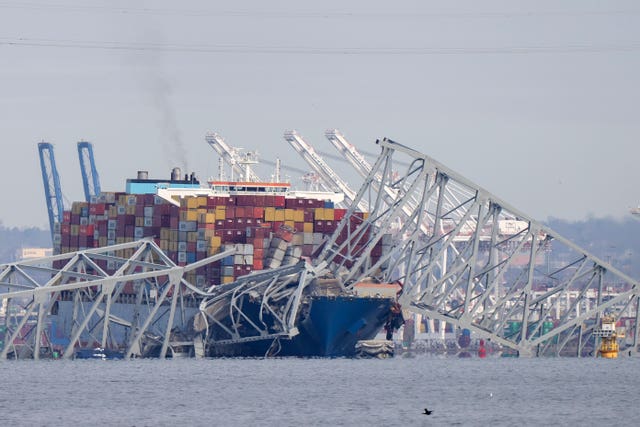Contract approved for Baltimore bridge rebuild after deadly collapse
The March bridge collapse killed six members of a road work crew who were filling potholes on the bridge when it came crashing down into the water.

Transportation leaders in the US have approved a contract for the rebuilding of the Francis Scott Key Bridge in Baltimore, several months after it collapsed under the impact of a massive container ship that lost power and crashed into one of its supporting columns.
In the immediate aftermath of the deadly March 26 collapse, officials quickly promised to rebuild the bridge — a long-standing Baltimore landmark and vital piece of transportation infrastructure.
They cited a 2028 completion date and estimated the project would cost 1.7 billion dollars (£1.2 billion) and include significantly more pier protection to better defend against future wayward ships.

At a monthly meeting on Thursday morning, the Maryland Transportation Authority board awarded a 73 million dollar (£55.4 million) contract for the first phase of the project to Kiewit Infrastructure, which calls itself “one of North America’s largest and most respected engineering and construction organisations”.
Kiewit officials did not immediately respond to a request for comment on Thursday morning.
In announcing their recommendation to the board, state transportation officials said the company’s proposal was ranked first for its technical contents despite being somewhat more expensive than others.
Officials have said the new bridge will be somewhat taller than the old one to accommodate ever-larger ships entering Baltimore’s harbour.
The original Key Bridge took five years to construct and opened in 1977.
The March bridge collapse killed six members of a road work crew who were filling potholes on the bridge when it came crashing down into the water below.
Baltimore’s busy port was closed for months after the collapse and increased traffic congestion in the region remains a problem for drivers.
An FBI investigation is ongoing into the circumstances leading up to the collapse, including power outages experienced by the cargo ship Dali while it was still docked in Baltimore.





